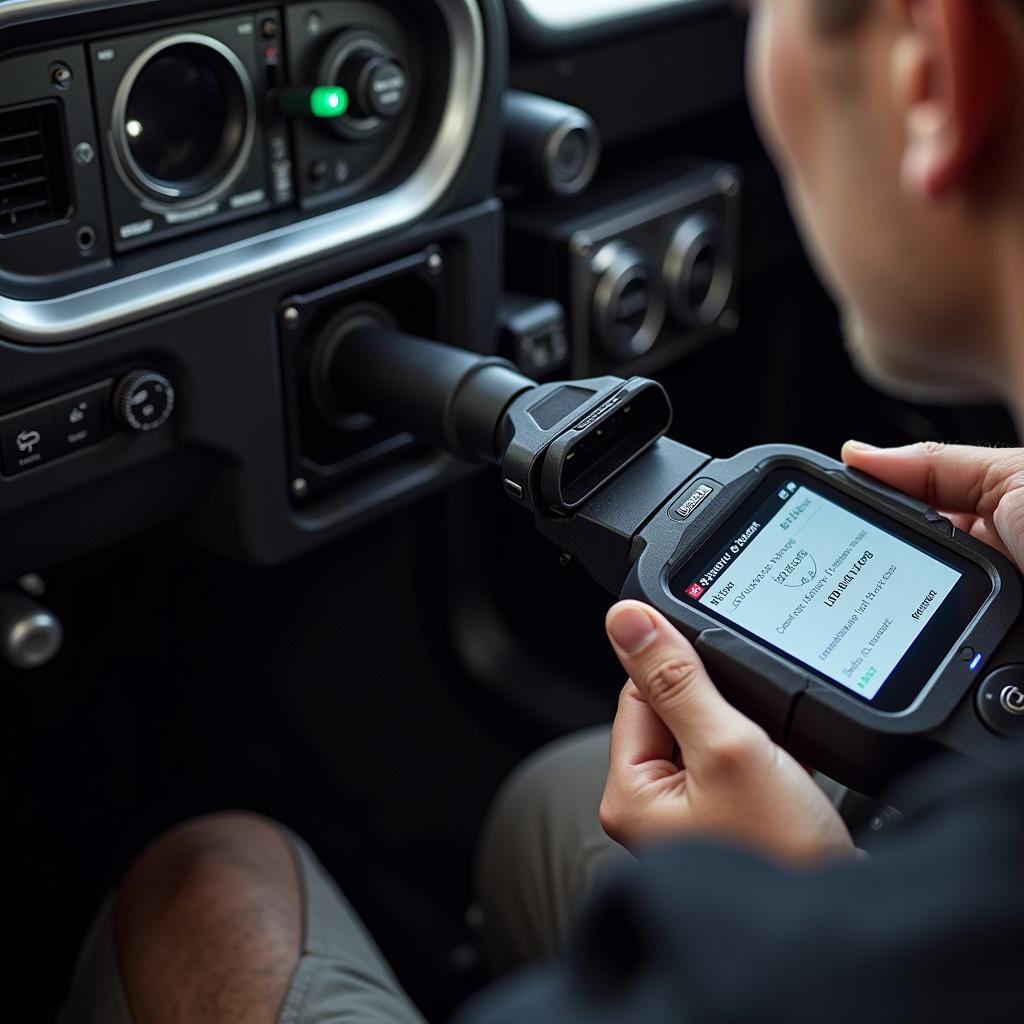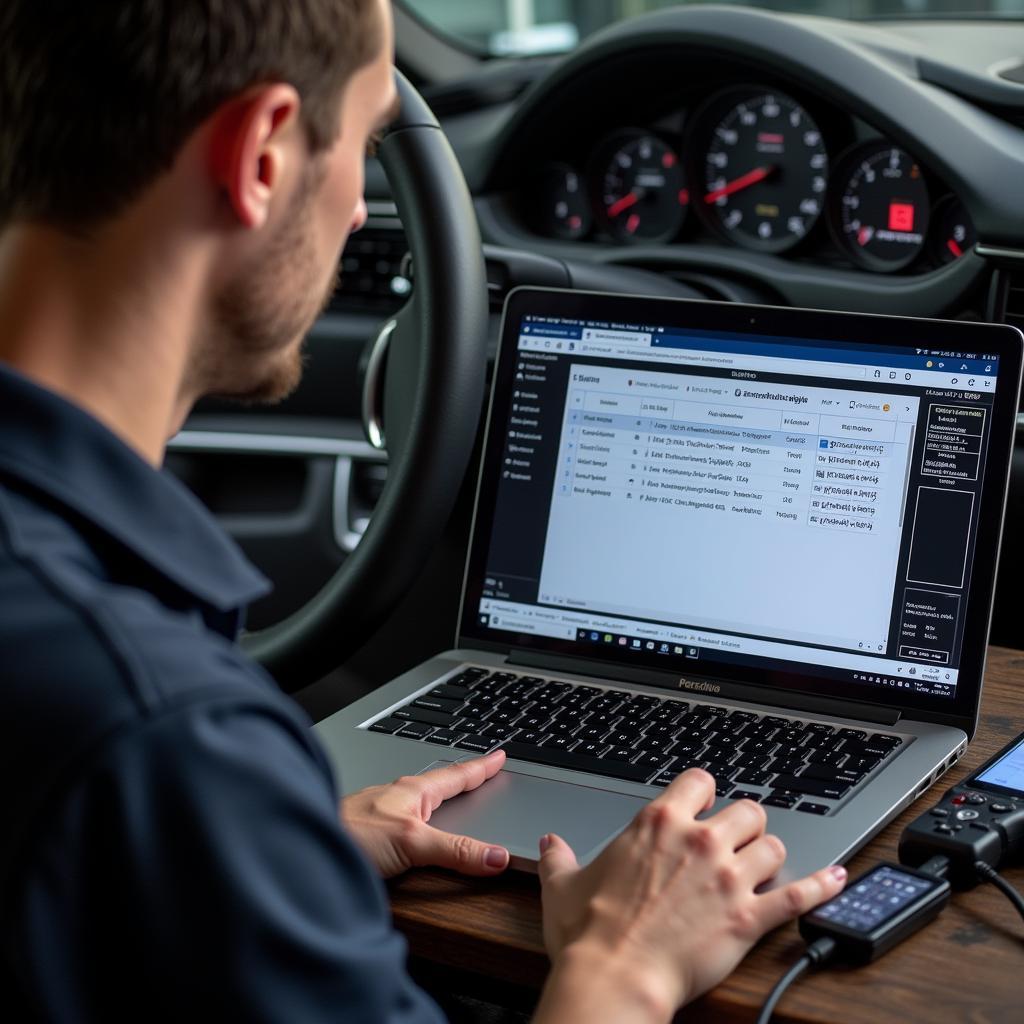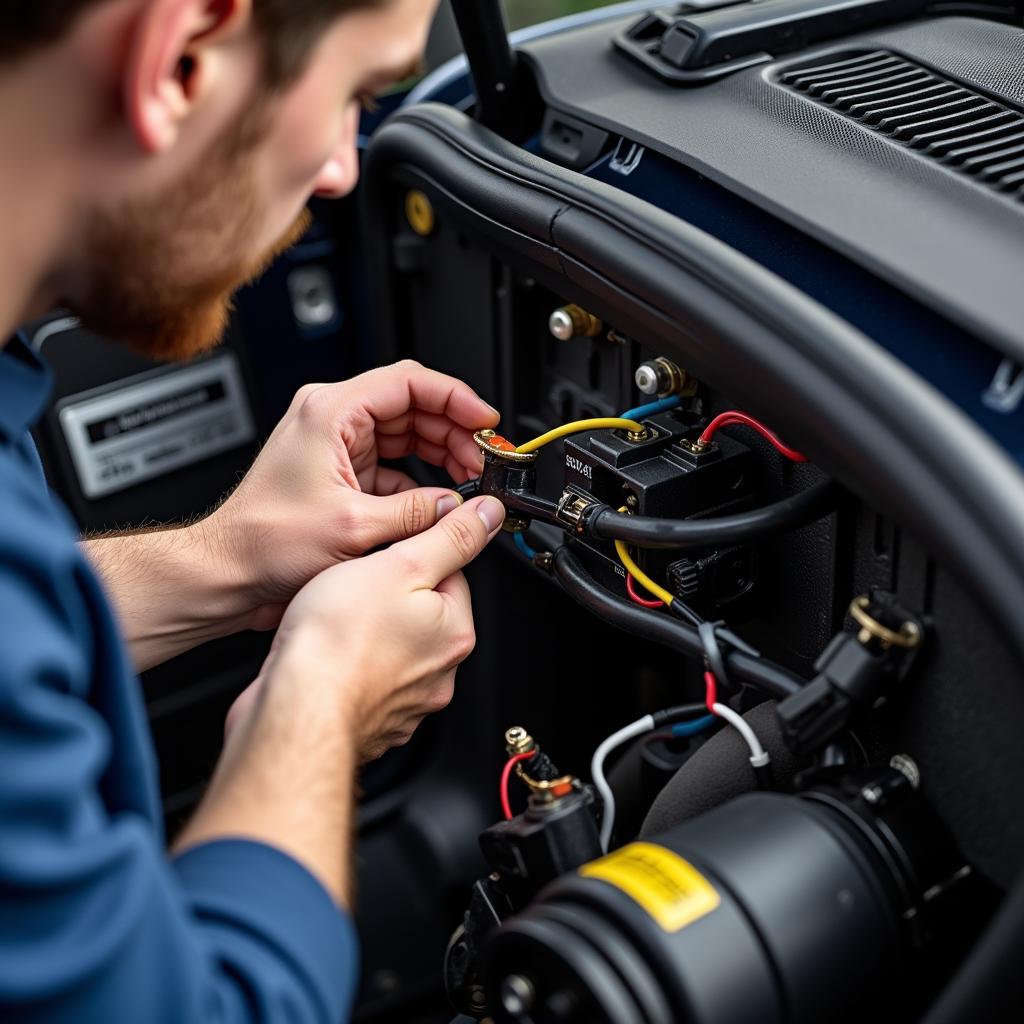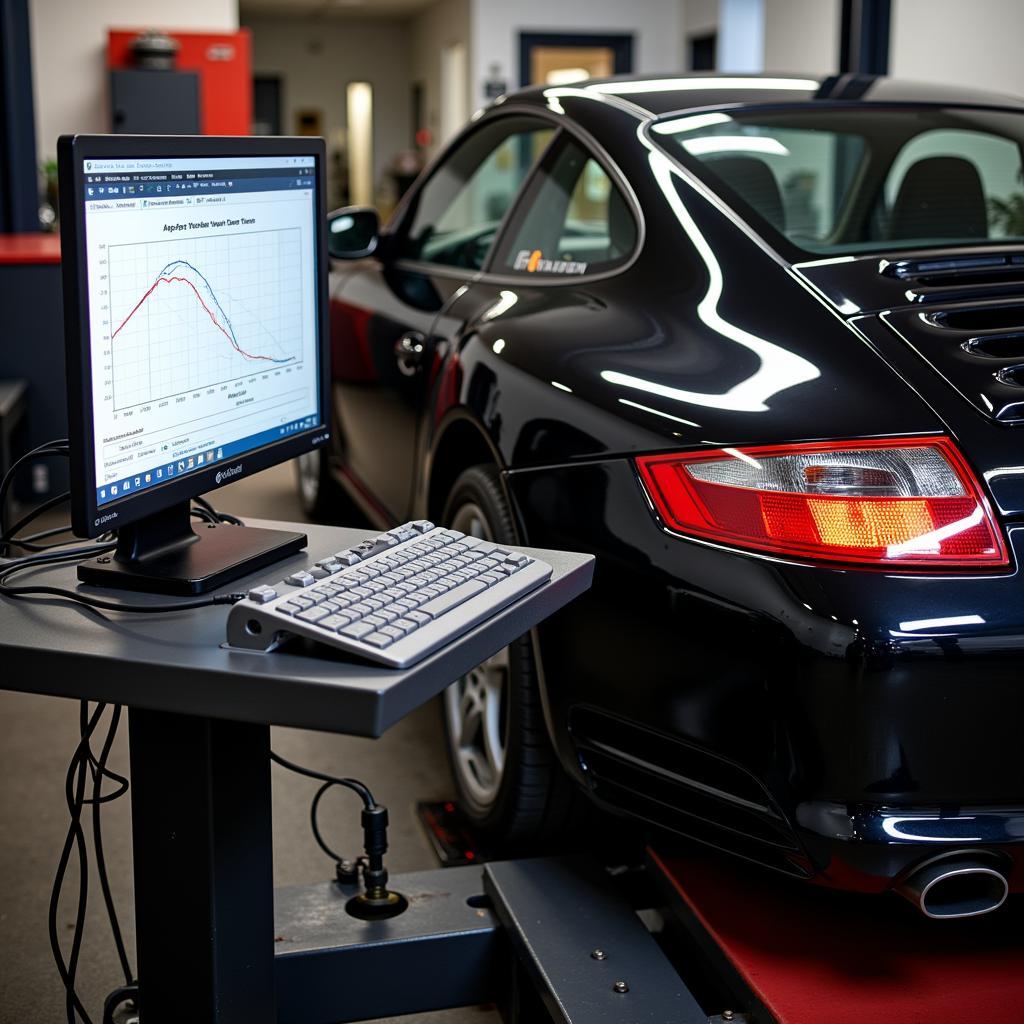Diagnosing rear-end issues on your Porsche can be a complex undertaking. Whether it’s a malfunctioning sensor, electrical gremlin, or mechanical problem, identifying the root cause requires specialized knowledge and tools. This article explores common Porsche diagnostic rear problems, offering valuable insights and solutions for Porsche owners, mechanics, and technicians.
If you’re facing a rear-end problem with your Porsche, understanding the diagnostic process is crucial. From understanding the intricacies of the Porsche diagnostic system to leveraging specialized tools, accurate diagnosis is the first step toward a reliable repair. porsche cayman diagnostics rear can offer specific information regarding Cayman models.
Common Porsche Diagnostic Rear Issues
Several problems can manifest in the rear of a Porsche, ranging from simple sensor malfunctions to complex mechanical failures. Understanding these potential issues can streamline the diagnostic process.
- Suspension Problems: Unusual noises, uneven ride height, or difficulty handling can indicate issues with the rear suspension system, including shocks, struts, or control arms.
- Brake System Malfunctions: Issues such as a soft brake pedal, grinding noises, or pulling to one side can suggest problems with the rear brakes, including worn pads, rotors, or caliper issues.
- Electrical System Faults: Malfunctioning tail lights, backup sensors, or other electrical components in the rear can often be traced back to wiring problems, faulty modules, or blown fuses.
- Exhaust System Issues: Excessive noise, unusual smells, or decreased performance can be indicative of problems with the rear exhaust system, including leaks, damaged mufflers, or catalytic converter issues.
Understanding the Porsche Diagnostic System
Porsche utilizes a sophisticated onboard diagnostic system to monitor various vehicle components and store fault codes. Accessing these codes through a best diagnostic scanner for porsche is essential for accurate diagnosis.
Utilizing Diagnostic Tools Effectively
Using the correct diagnostic scanner is vital. It allows access to Porsche-specific codes and live data, enabling targeted troubleshooting.
 Connecting a diagnostic scanner to a Porsche's OBD-II port
Connecting a diagnostic scanner to a Porsche's OBD-II port
Decoding Porsche Diagnostic Trouble Codes (DTCs)
Once retrieved, Porsche DTCs provide valuable clues about the nature of the problem. Understanding how to interpret these codes is key to effective repair.
Interpreting DTCs for Accurate Repair
Each DTC corresponds to a specific fault within the vehicle system. Cross-referencing these codes with reliable resources can pinpoint the problematic component or system.
 Interpreting Porsche Diagnostic Trouble Codes on a laptop screen
Interpreting Porsche Diagnostic Trouble Codes on a laptop screen
Troubleshooting Common Rear-End Problems
Systematic troubleshooting involves testing various components and systems to isolate the root cause of the problem. This process requires a combination of diagnostic tools, technical expertise, and experience.
Step-by-Step Diagnostic Procedures
Following a structured diagnostic approach is crucial. This involves checking for obvious visual cues, verifying sensor readings, and conducting systematic tests to narrow down the possibilities.
- Inspect visually for any obvious signs of damage or wear.
- Check the wiring harnesses and connectors for any signs of corrosion or damage.
- Use a multimeter to test the continuity of the wiring and the resistance of the components.
- Monitor live data using a diagnostic scanner to assess the performance of the sensors and actuators.
“A methodical approach is essential for effective Porsche diagnostic rear troubleshooting,” says renowned Porsche technician, Andreas Braun. “Start with the basics, visually inspect, and then delve into the diagnostic codes and live data.”
 Inspecting the wiring harness of a Porsche's rear end
Inspecting the wiring harness of a Porsche's rear end
Conclusion
Effectively diagnosing Porsche diagnostic rear problems requires a blend of specialized knowledge, appropriate tools, and a systematic approach. By understanding the intricacies of the Porsche diagnostic system and employing effective troubleshooting techniques, mechanics and Porsche owners can quickly and accurately identify the root cause of rear-end issues, ensuring a timely and reliable repair. If you encounter persistent problems, seeking professional assistance is always recommended.
FAQ
- What are common Porsche diagnostic rear issues? Suspension problems, brake malfunctions, electrical faults, and exhaust system issues are common.
- How can I access Porsche diagnostic trouble codes? By using a compatible diagnostic scanner.
- Why is it important to use the correct diagnostic scanner? It allows access to Porsche-specific codes and live data.
- What is the significance of interpreting DTCs? They pinpoint the problematic component or system.
- What does systematic troubleshooting involve? Testing components and systems to isolate the problem’s root cause.
- What is the first step in diagnosing rear-end issues? A thorough visual inspection for any obvious signs of damage.
- When should I seek professional assistance? If you encounter persistent problems or are unsure about the diagnosis.
Need help with your Porsche’s rear-end diagnostics? Don’t hesitate to reach out! Contact us via Whatsapp: +1 (641) 206-8880, Email: CARDIAGTECH[email protected] or visit us at 276 Reock St, City of Orange, NJ 07050, United States. Our 24/7 customer support team is ready to assist you. Check out our articles on porsche cayman diagnostics rear and the best diagnostic scanner for porsche for more specific information. You might also find information on front-end diagnostics or other Porsche models helpful. We are here to help you keep your Porsche running smoothly.

